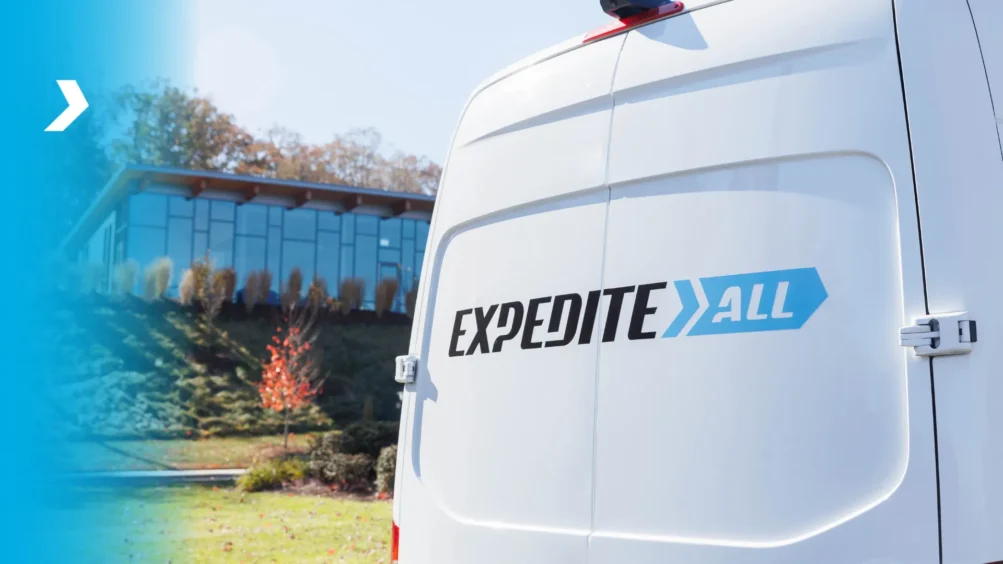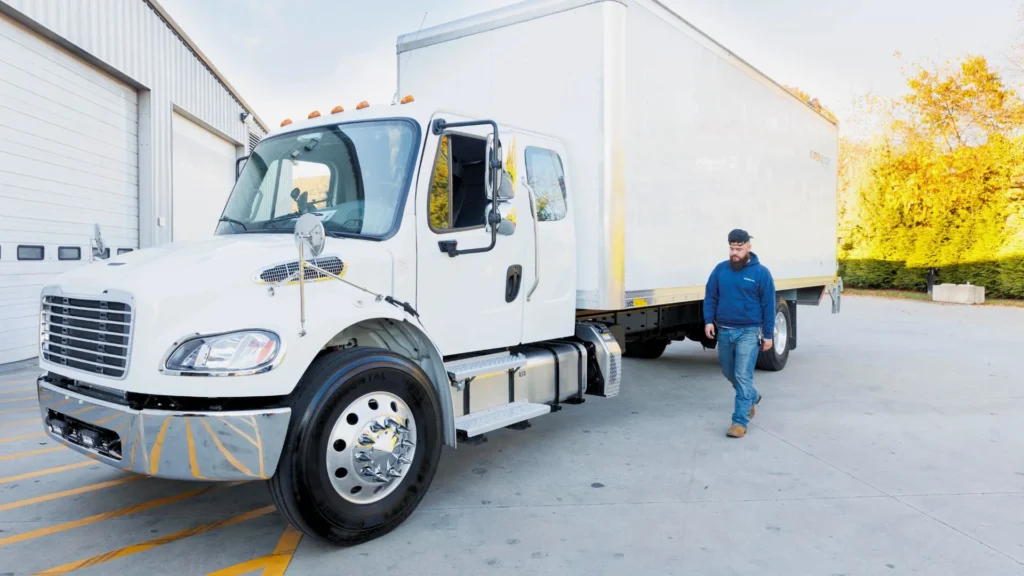
How to Expedite and Recover LTL Freight Efficiently
Sharing a truck’s space isn’t the best idea when your goal is rapid delivery, making less-than-truckload (LTL) shipping annoyingly slow. However, slow speed is only part of the problem. LTL freight is accompanied by plenty of challenges, running the gamut from a high risk of damage or loss and complex coordination to a lack of visibility and inefficient routing, any of which can further worsen the situation. Add to this any emergency like the customer’s urgent request for faster delivery, and you face a pressing need to expedite and recover your LTL shipment.
When to Consider Expediting LTL Freight
While you’d never use LTL services for time-sensitive or urgent shipments, expediting LTL freight often becomes the only way to save your shipment and reputation. This typically happens due to unforeseen events and the impact caused by LTL challenges.
Production delays
When manufacturing processes fall behind schedule, the resulting delay can ripple through the supply chain. If so, expedited shipping appears as an efficient way to bridge the gap, ensuring that products reach their destination on time despite initial setbacks.
Urgent requests
Retailers may face tight deadlines to restock popular items or seasonal products. If these products are already shipped with LTL, using expedited services will allow for preventing stockouts and maintaining customer satisfaction.
The above cases clearly show that while LTL shipping comes with lower costs, the potential drawbacks can outweigh its financial benefits. For instance, production shutdowns due to delayed parts can result in significant operational expenses and affect both sales and customer satisfaction. In such cases, choosing, at first sight, more expensive expedited shipping services can save not only your reputation but also your budget.
Steps to Expedite LTL Freight
Let’s imagine the situation: you’re already in need of expedited LTL freight services. What would be your practical steps to do the trick?
1. Identify and Isolate the Freight
First and foremost, you need to identify and isolate the shipment. Begin by contacting the original carrier to gather essential information. You’ll need the PRO number, which is the shipment’s unique tracking identifier, and the current location of the freight.
Once you have the necessary details, isolate the freight from other shipments. This step may involve coordinating with the warehouse or the distribution center where the freight is currently located. In some cases, you’ll need to request unloading your shipment at the nearest intermediate delivery point.
2. Engage an Expedited Carrier
Next, select a reliable expedited carrier to handle the shipment. It is important to choose a carrier with a strong reputation for on-time deliveries and excellent customer service. Look for a carrier that specializes in expedited services and has the necessary infrastructure to support urgent shipments.
Provide the expedited carrier with detailed shipment information, including its current location, destination, size and weight, and any special handling requirements.
3. Execute the Expedited Delivery
Once you have engaged an expedited carrier, you need to execute the delivery. Check the types of vehicles and services available to match the shipment’s requirements. Expedited carriers often offer a range of options, from small vans for quick local deliveries to larger trucks for long-haul routes.
Note: As soon as the shipment is picked up, stay in touch with the carrier to address any potential issues that might arise during transit.
Expedited deliveries always come with added costs, but the benefits of maintaining supply chain continuity and meeting urgent delivery requirements will outweigh these expenses.
Cost Implications of Expedited Freight
No secret expedited freight services come with higher costs compared to regular LTL shipping. The primary cost components include the base rate for the expedited service, fuel surcharges, and accessorial charges such as liftgate services or residential delivery fees. Expedited services often charge a premium due to the need for faster transit times and dedicated vehicles. Additional costs may also arise from handling fees if special care or packaging is required for the shipment.
Expedited service rates are typically higher than regular LTL, which cost is spread among other shippers according to the truck space each occupies. Expedited freight offers exclusive and prioritized handling of the shipment, which ensures enhanced safety and faster delivery times.
Factors Influencing the Final Price
Several factors shape the final price of expedited freight services. Along with the distance that plays a crucial role, the shipment’s size and weight also impact the cost, with larger or heavier shipments incurring higher fees. Additionally, the extra urgency of the delivery – overnight or same-day services – may significantly affect pricing above standard expedited options. Seasonal demand and market conditions can also cause fluctuations in pricing.
Anyway, expedited freight services, while more costly, provide critical advantages in ensuring timely deliveries and meeting urgent demand.
Tips for Avoiding Expedited Services
Effective planning and scheduling are best practices to avoid unexpected expedited freight services. The ability to forecast demand accurately empowers you to maintain enough inventory to meet customer needs without last-minute rush shipments. Properly scheduled deliveries and collaborating closely with suppliers and carriers will allow you to create buffer stock to absorb unexpected spikes in demand and avoid last-minute logistics hurdles.
Effective planning and scheduling are impossible without real-time tracking and proactive communication. Utilizing GPS and other tracking systems to monitor the progress of your freight continuously allows you to identify and address potential delays before they escalate into emergencies requiring expedited services. In turn, proactive communication with your carriers and customers is equally important. Regular updates help manage expectations and provide time to adjust plans if necessary.
Note: Employing automated alerts and notifications can enhance communication efficiency. These systems can automatically inform relevant parties about shipment statuses, ensuring everyone stays updated without manual intervention.

Small Truckload (STL) – Best Alternative for Small Shipments
Small Commercial Trucks for Small Shipments
Using a small dedicated truck like a box truck, straight truck, or van for small shipments is the best strategy to avoid unplanned expenses and save many headaches. Here are some of the benefits you’ll get if you go with STL from the very beginning:
- Full Truckload (FTL) Features at a Much Lower Cost
While STL services cost more than LTL shipping, they are generally less expensive than Full Truckload (FTL) services. Small trucks maximize efficiency by providing just the right space for small to medium-sized shipments, avoiding the need to pay for unused truck space typical in FTL shipping.
- High Speed and Efficiency
STL services provide faster transit times compared to LTL shipping. Since small trucks operate with fewer stops and direct routes, shipments reach their destinations more quickly.
- Enhanced Safety
Using a dedicated small truck reduces the handling of goods, which minimizes the risk of damage. In LTL shipping, goods are transferred multiple times at various hubs, increasing the likelihood of mishandling. STL shipments are loaded once and transported directly, ensuring higher safety and security.
- Flexibility in Scheduling
STL offers unmatched flexibility in scheduling pickups and deliveries. Small trucks can navigate urban areas and tight spaces more easily than larger trucks, allowing for more precise delivery windows.
- High Visibility
Many STL providers offer advanced tracking systems, giving businesses real-time visibility into their shipments. Companies can monitor the progress of their goods and communicate accurate delivery times to customers.
Conclusion
Expediting LTL freight is a costly and resource-consuming process. It involves identifying and isolating the shipment, engaging a reliable expedited carrier, and executing the delivery efficiently. With this information in mind, the idea of switching to small Truckload (STL) from the very beginning appears to be more beneficial, bringing to the table fast delivery, reliability, and safety at a cost slightly exceeding LTL services.
When choosing STL, consider the reliability of your transportation provider, as it is crucial for timely and secure deliveries. A reliable logistics partner like Expedite All provides comprehensive expedited freight solutions, ensuring your shipments are handled with the utmost care and efficiency.
Contact Expedite All today to streamline your logistics and meet your urgent shipping needs with confidence.
You May Be Interested In
What is Reverse Logistics? The Process, Importance, and Real-world Examples
While traditional logistics primarily concerns efficiently moving products from manufacturers to consumers, reverse logistics focuses on the journey of products in the opposite direction – from consumers back to the manufacturer, seller, or distributor…
Driver Retention and Its Impact on Fraud Prevention
As the saying goes, an old friend is better than two new ones. In logistics, this can be rephrased as: a loyal and experienced driver is better than two newcomers. A driver with a good driving record who has been with your company for many years is a valuable resource for promoting and safeguarding your […]